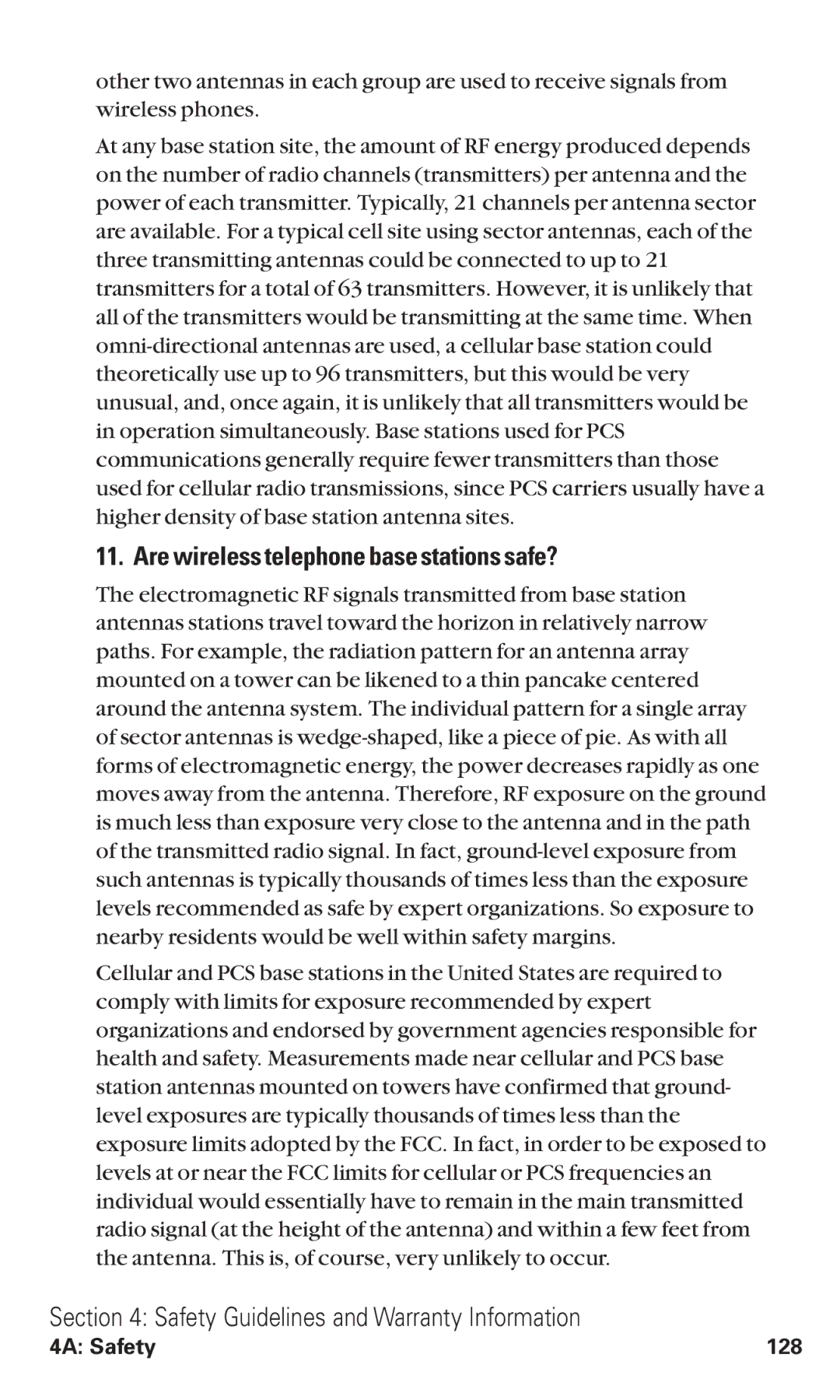other two antennas in each group are used to receive signals from wireless phones.
At any base station site, the amount of RF energy produced depends on the number of radio channels (transmitters) per antenna and the power of each transmitter. Typically, 21 channels per antenna sector are available. For a typical cell site using sector antennas, each of the three transmitting antennas could be connected to up to 21 transmitters for a total of 63 transmitters. However, it is unlikely that all of the transmitters would be transmitting at the same time. When
11. Are wireless telephone base stations safe?
The electromagnetic RF signals transmitted from base station antennas stations travel toward the horizon in relatively narrow paths. For example, the radiation pattern for an antenna array mounted on a tower can be likened to a thin pancake centered around the antenna system. The individual pattern for a single array of sector antennas is
Cellular and PCS base stations in the United States are required to comply with limits for exposure recommended by expert organizations and endorsed by government agencies responsible for health and safety. Measurements made near cellular and PCS base station antennas mounted on towers have confirmed that ground- level exposures are typically thousands of times less than the exposure limits adopted by the FCC. In fact, in order to be exposed to levels at or near the FCC limits for cellular or PCS frequencies an individual would essentially have to remain in the main transmitted radio signal (at the height of the antenna) and within a few feet from the antenna. This is, of course, very unlikely to occur.
Section 4: Safety Guidelines and Warranty Information
4A: Safety | 128 |
